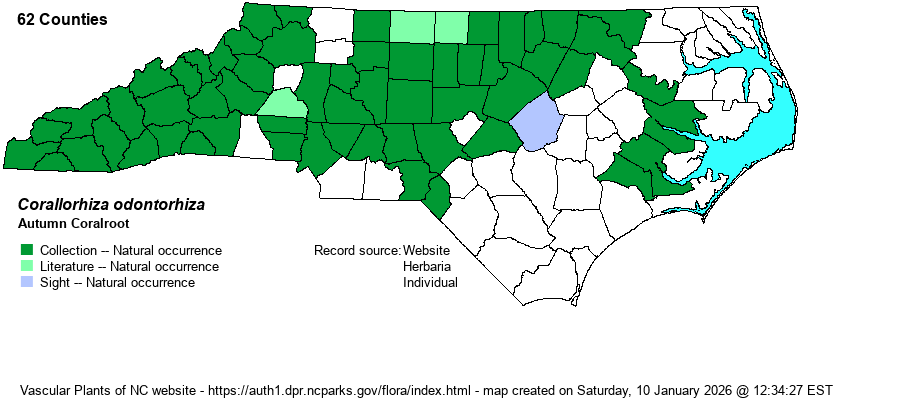Show/Hide Synonym
| taxonName | relationship | relatedTaxonName | relatedTaxonRefText | relComments |
|---|
|
|
|
|
|
|
|
|
|
|
|
| Corallorhiza odontorhiza | > | Corallorhiza odontorhiza var. odontorhiza | Flora of North America (1993b, 1997, 2000, 2002a, 2002b, 2003a, 2004b, 2005, 2006a, 2006b, 2006c, 2007a, 2009, 2010) | | | Corallorhiza odontorhiza | > | Corallorhiza odontorhiza var. odontorhiza | Kartesz (1999) | | | Corallorhiza odontorhiza | > | Corallorhiza odontorhiza var. odontorhiza | | | | Corallorhiza odontorhiza | > | Corallorhiza odontorhiza var. odontorhiza | Correll (1950)=X. | | | Corallorhiza odontorhiza | > | Corallorhiza odontorhiza var. pringlei | Flora of North America (1993b, 1997, 2000, 2002a, 2002b, 2003a, 2004b, 2005, 2006a, 2006b, 2006c, 2007a, 2009, 2010) | | | Corallorhiza odontorhiza | > | Corallorhiza odontorhiza var. pringlei | Kartesz (1999) | | | Corallorhiza odontorhiza | > | Corallorhiza odontorhiza var. pringlei | | | | Corallorhiza odontorhiza | > | Corallorhiza odontorhiza var. pringlei | Correll (1950)=X. | | | Corallorhiza odontorhiza | = | Corallorrhiza odontorhiza | Small (1933, 1938) | , orthographic variant | | Corallorhiza odontorhiza | > | Corallorrhiza pringlei | | | | Source: Weakley's Flora |
|

